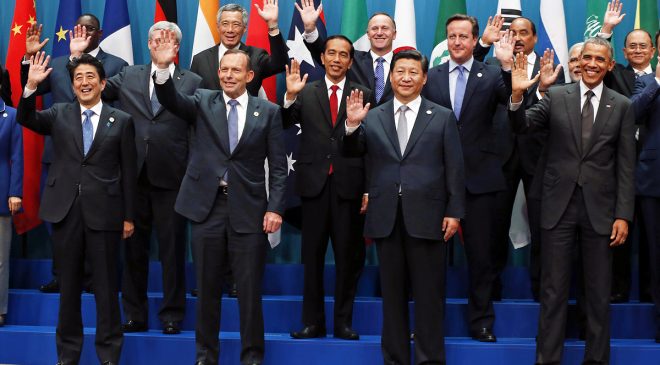My 14-year-old daughter walked over to a nearby floral shop earlier this week to see if she could work there part-time this summer. The florist had posted recently on social media that he was hiring. With her resume in hand, and spring classes over, my daughter told the shopkeeper she could start as soon as possible. The florist said he would love to hire her but when he employed a 14-year-old a couple of years ago, he got in trouble with the city. Apparently, workers under 16 aren’t allowed to use sharp scissors here. “Come back in two years and I’ll definitely hire you,” he enthusiastically told my daughter.
She walked home, disappointed about the job and dismayed at the foolishness of child labor laws that prevent teenagers from gaining important workplace skills and experience.
Fortunately, the current labor market shortage triggered by the government’s pandemic response may be a boon for teenagers.
“For American teenagers looking for work, this may be the best summer in years,” The New York Times reported on Sunday. “As companies try to go from hardly staffed to fully staffed practically overnight, teens appear to be winning out more than any demographic group.”
More older teenagers are working this spring than at any time since the wake of the 2008 financial crisis, helping to slow a decades-long downward trend in teen employment. According to the US Bureau of Labor Statistics, teen labor force participation plummeted from a high of 57.9 percent in 1979 to just 34.1 percent in 2011. Part of this decline is related to more emphasis on academics, extracurricular activities, and other structured programming for adolescents. But public policy may also be to blame.
Minimum Wage Laws Disproportionately Harm Teenagers
Rising minimum wage laws have been enacted in numerous cities and states in recent years, creating an artificial price floor on entry-level labor that often prevents teenagers from getting their foot in the door.
As the price of labor increases due to government-imposed minimum wages, employers often cut back on the number of employees they hire, turn to automation, or go out of business entirely. This limits the entry-level jobs available to teenagers and other low-skilled workers and creates barriers for workers seeking to gain job experience. Teenagers with no work background may simply not be worth the established minimum wage, and many, like my daughter, would be happy to work for lower wages to gain valuable skills.
As the renowned economist, Thomas Sowell, writes in his book Basic Economics:
“Making it illegal to pay less than a given amount does not make a worker’s productivity worth that amount—and, if it is not, that worker is unlikely to be employed. Yet minimum wage laws are almost always discussed politically in terms of the benefits they confer on workers receiving those wages. Unfortunately, the real minimum wage is always zero, regardless of the laws, and that is the wage that many workers receive in the wake of the creation or escalation of a government-mandated minimum wage, because they either lose their jobs or fail to find jobs when they enter the labor force.”
According to a July 2018 report by the Congressional Budget Office regarding a proposed $15 federal minimum wage, teenagers are disproportionately harmed by increasing the minimum wage: “The $15 option would alter employment more for some groups than for others. Almost 50 percent of the newly jobless workers in a given week—600,000 of 1.3 million—would be teenagers.”
The Biden administration has been pushing to raise the federal minimum wage to $15, but has met Congressional resistance. In late-April, however, the president signed an executive order to raise the federal minimum wage for contractors to $15 an hour.
Child Labor Laws Prevent Teens from Working
Minimum wage laws, along with child labor laws, emerged in 1938 when the US passed the Fair Labor Standards Act (FLSA). Because of this legislation, the government is often credited with improving working conditions. But as FEE’s Antony Davies and James Harrigan explain, markets, not the government, were responsible for raising worker wages and reducing child labor. The Industrial Revolution, and the economic growth and prosperity it created, enabled parents to support their children on their own rather than relying on a child’s wages.
According to the Economic History Association: “Most economic historians conclude that this legislation was not the primary reason for the reduction and virtual elimination of child labor between 1880 and 1940. Instead they point out that industrialization and economic growth brought rising incomes, which allowed parents the luxury of keeping their children out of the work force.”
Child labor laws have expanded in many states over the past several decades. While perhaps well-intentioned, these laws infantilize teenagers by creating numerous unjustifiable barriers to work. Here in Massachusetts, for example, child labor laws prevent teen workers under age 16 from operating a microwave oven or working at an amusement park. And watch out for those scissors!
The current labor market shortage, brought about by supplemental unemployment benefits and government-issued stimulus checks over the past year that incentivized individuals not to work, may be helping to loosen some of the arbitrary child labor restrictions for younger teens.
According to The New York Times, city officials in Henderson, Kentucky were so desperate for lifeguards to staff their public pool that they lowered the minimum applicant age from 16 to 15 and raised the starting pay from $8.50 to $10 an hour. The result? “More teenagers applied and the city has started interviewing candidates for the open positions,” the Times reported.
Now is an ideal time for teenagers to apply for a summer job. Employers are raising entry-level wages and offering applicants incentives and signing bonuses. Some McDonald’s franchises, for instance, are reportedly offering free iPhones to new hires and $50 just to come in for an interview.
The tight labor market means that teenagers are sought-after and will have an opportunity to take on more responsibilities and learn new skills. On the edge of adulthood, adolescents are too often coddled and controlled. Public policy, such as minimum wage laws and restrictive child labor statutes, makes it difficult for teenagers to exercise personal agency and self-reliance, and can prevent them from acquiring competencies that will help in whatever career path they ultimately choose. The government response to the coronavirus has created an opening for teenagers to seize a prime moment of early job training and development.
As for my daughter? She will continue to run her own baking business until she is old enough to use scissors.




